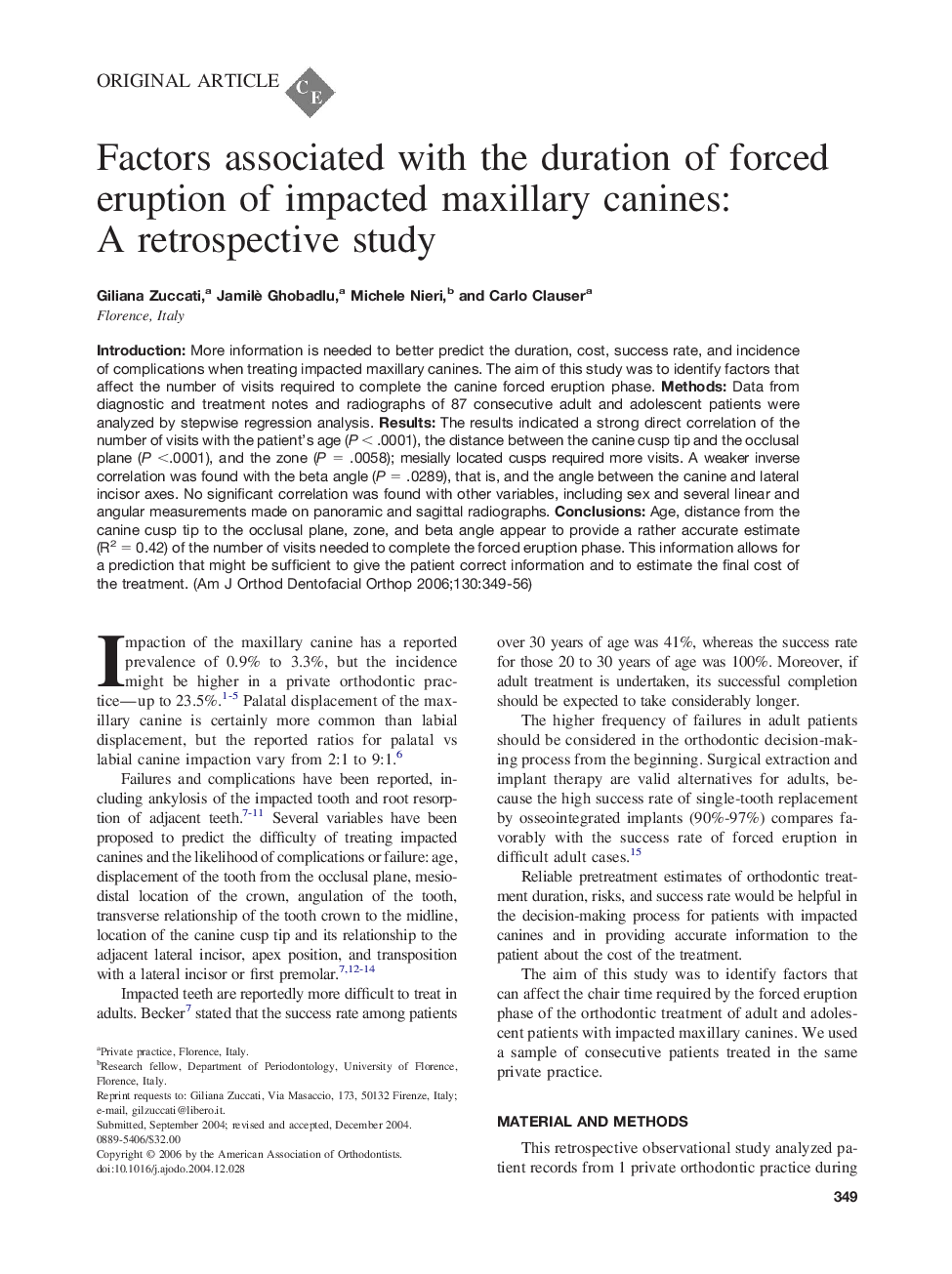| Article ID | Journal | Published Year | Pages | File Type |
|---|---|---|---|---|
| 3119511 | American Journal of Orthodontics and Dentofacial Orthopedics | 2006 | 8 Pages |
Introduction: More information is needed to better predict the duration, cost, success rate, and incidence of complications when treating impacted maxillary canines. The aim of this study was to identify factors that affect the number of visits required to complete the canine forced eruption phase. Methods: Data from diagnostic and treatment notes and radiographs of 87 consecutive adult and adolescent patients were analyzed by stepwise regression analysis. Results: The results indicated a strong direct correlation of the number of visits with the patient’s age (P < .0001), the distance between the canine cusp tip and the occlusal plane (P <.0001), and the zone (P = .0058); mesially located cusps required more visits. A weaker inverse correlation was found with the beta angle (P = .0289), that is, and the angle between the canine and lateral incisor axes. No significant correlation was found with other variables, including sex and several linear and angular measurements made on panoramic and sagittal radiographs. Conclusions: Age, distance from the canine cusp tip to the occlusal plane, zone, and beta angle appear to provide a rather accurate estimate (R2 = 0.42) of the number of visits needed to complete the forced eruption phase. This information allows for a prediction that might be sufficient to give the patient correct information and to estimate the final cost of the treatment.
